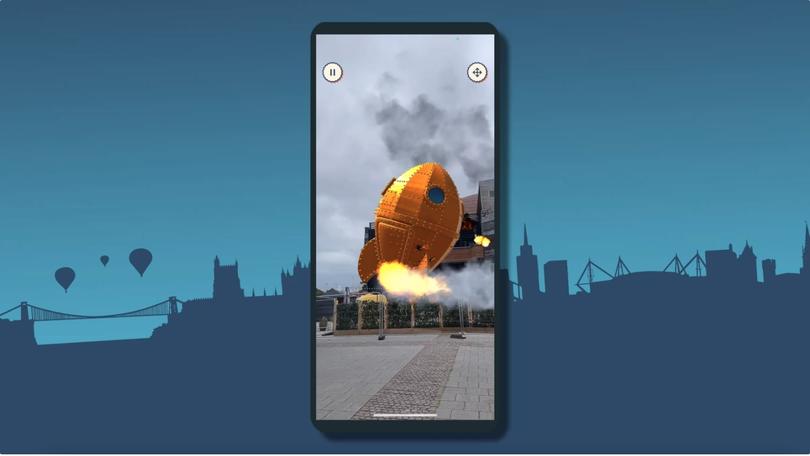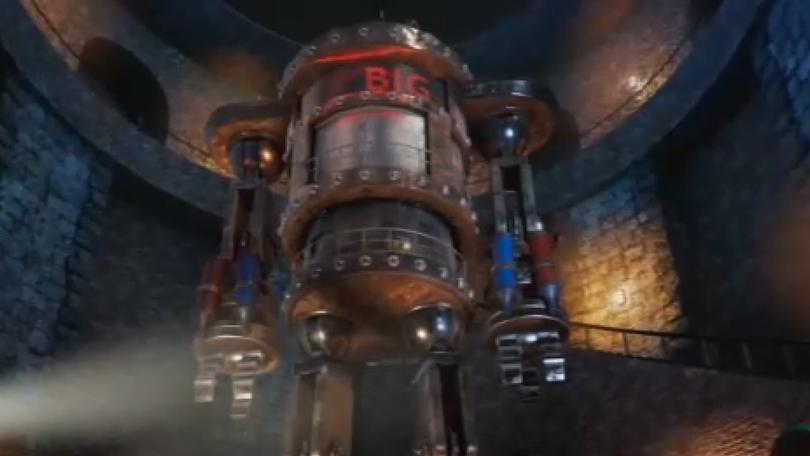Wallace & Gromit’s first foray into AR
Aardman Animations, the creators of Wallace & Gromit, tasked Fictioneers with bringing this iconic series into the digital world with two AR apps. The first, The Big Fix Up, brings Wallace & Gromit’s adventures into fans’ homes. Fix Up the City, the second app, offers a unique city-scale experience of users’ surroundings in three locales.
-
The challenge
Finding innovative ways to bring Wallace & Gromit into the digital world and reach new audiences
-
Platforms
iOS, Android
-
Team members
43 contributors across a variety of partner organizations and the U.K. government
-
Location
Bristol and Cardiff, U.K., San Francisco, U.S.
Bringing Wallace and Gromit into the physical world
Fictioneers, a consortium of three companies (Sugar Creative, Potato, and Tiny Rebel Games) leveraged Unity’s AR tech stack and artists tools to build immersive AR experiences that stay true to Wallace & Gromit’s visual style and are accessible to a wide audience of all ages.

The results
- The Big Fix Up
- 197 story events over 90 minutes
- 150,000+ website visits
- 500,000+ story jobs completed
- 420,000+ earned media hits
- Winner of over 10 industry awards
- Fix Up The City
- 1000+ instances of AR gameplay
- 92.5% NPS rating
Finding multiplatform support with AR Foundation
When Fictioneers built The Big Fix Up, they considered which software could enable rapid development for multiple platforms, as well as providing quality output that would impress users.
AR Foundation helped the team to develop a single codebase that supports both iOS and Android applications. The tech acted as a wrapper for the shared features of ARCore and ARKit, while enabling the team to leverage platform-specific features like ARKit’s People Occlusion – without having to write a single line of platform-specific code.
AR Environment’s probes for real-world reflections and Light Estimation systems for coloring and shadows were essential AR features used to create The Big Fix Up, seamlessly blending virtual and physical worlds.
Unlocking faster workflows with Unity MARS
MARS’s advanced workflows helped Fictioneers developers to create, test, and iterate on complex AI characters, all within the Unity Editor.
The Simulation view was the backbone of the “Fix Up Your Space” feature. Players could get up close with Wallace’s inventions and key props from the story as it unfolded in a sandbox-style interactive environment. MARS made it possible to program logical conditions into the content with just a few clicks by utilizing the layer of semantic understanding provided by the system.
Unity MARS saved the team countless hours of prototyping and testing, giving them more time to focus on producing an incredible experience.
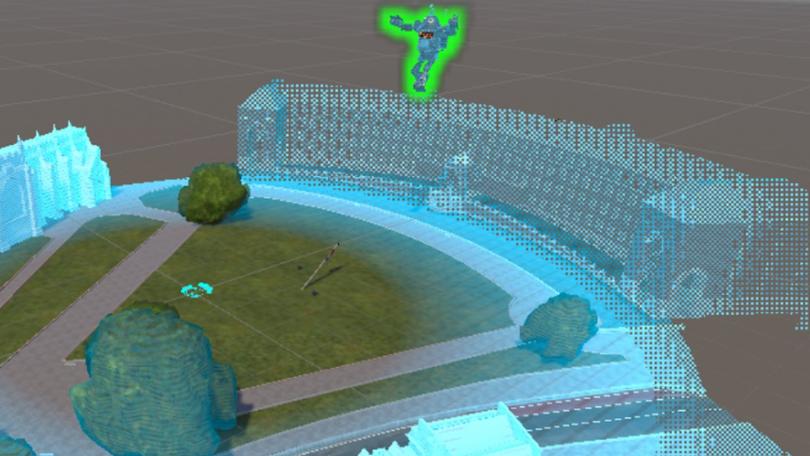
Scaling from living room to life-size
The road to creating the wealth of immersive Wallace & Gromit AR experiences came with a number of challenges, the greatest of which was shifting from a life-size experience to a tabletop and back again.
Working with Fantasmo, which provided a visual positioning system, Fictioneers used the dense point cloud data they had collected from the location scans to reproduce detailed models of real-world play spaces.
The scaled-down models were then used as a birds-eye view of the city, which let players bring Bristol into their homes with AR in The Big Fix Up. The same models were reused as a base to build full-scale occlusion meshes for Fix Up the City.
Balancing CG and in-game visuals
Fictioneers wanted to bring the magic and charm of Wallace & Gromit’s stop-motion animation into The Big Fix Up. They also wanted to strike a balance between CG videos and the gameplay itself. Unity’s graphics pipelines and cinematic tools gave them the flexibility they needed.
Fictioneers used a combination of the High Definition Render Pipeline (HDRP), Timeline, Unity Recorder, and Cinemachine to create and animate the cutscene sequences. They used the same animation workflow with the Universal Render Pipeline (URP) to create in-game AR scenes. By using the tools in this way, the team produced a high-definition, cinema-quality video with the same assets and animations used for in-app AR gameplay.
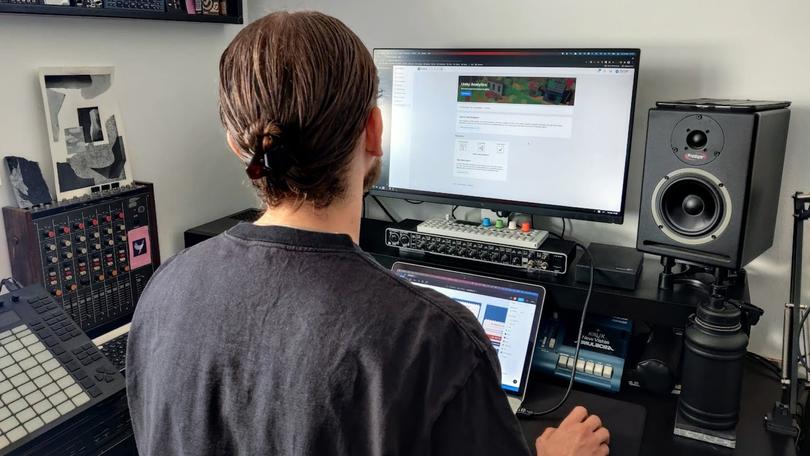
Streamlining deployment with Unity DevOps and LiveOps
The tool suites available through the Unity Dashboard were essential components during the development of both The Big Fix Up and Fix Up The City.
For example, Fictioneers used the DevOps suite to set up a variety of automated builds that targeted multiple platforms from both production and test branches using the Cloud Build tool. This saved their developers an enormous amount of time by providing detailed reports, unit test results, and build status.
The Remote Config tool from the LiveOps suite provided Fictioneers with the means to enable and disable attractions and relay important information to the users at the click of a button. The tool’s management features also allowed them to control which user groups in which locations received updates, and this component became vital to managing crowd flow in public space.
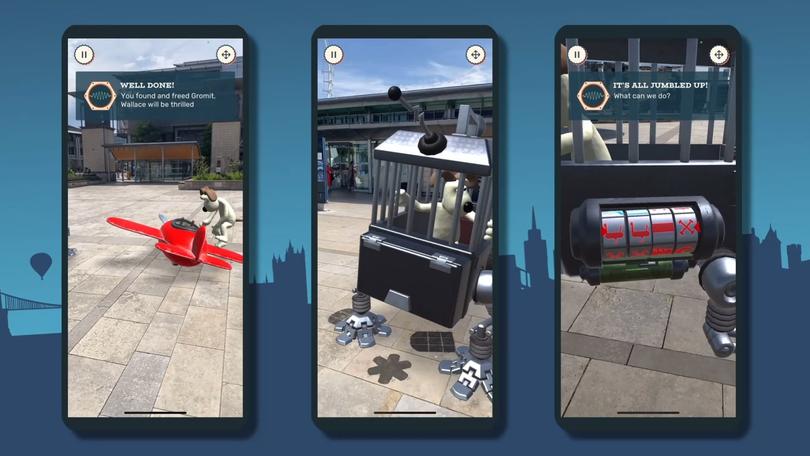
Adding AR to your existing native app
By leveraging the power of Unity as a Library, the team could export their Unity application as separate iOS Xcode and Android Gradle projects, then embed them into an existing native application. This enabled rapid iteration and validation of the story by separating the mixed reality content development (in Unity) and complex UI and traditional storytelling (in the native mobile app).
Using a simple script, the team could send and receive messages between Unity and their native app, allowing them to handle scene management and things like updating high scores, triggering in-app purchase flows and so on. By having the ability to load and unload the Unity runtime programmatically, they could really maximize the app’s performance while increasing the amount of devices it could support.
Download The Big Fix Up and Fix Up The City
Head to the App Store or Google Play to join the lads on their first AR adventure.


